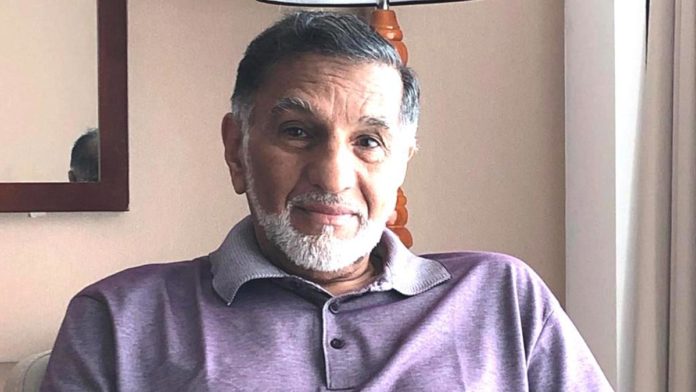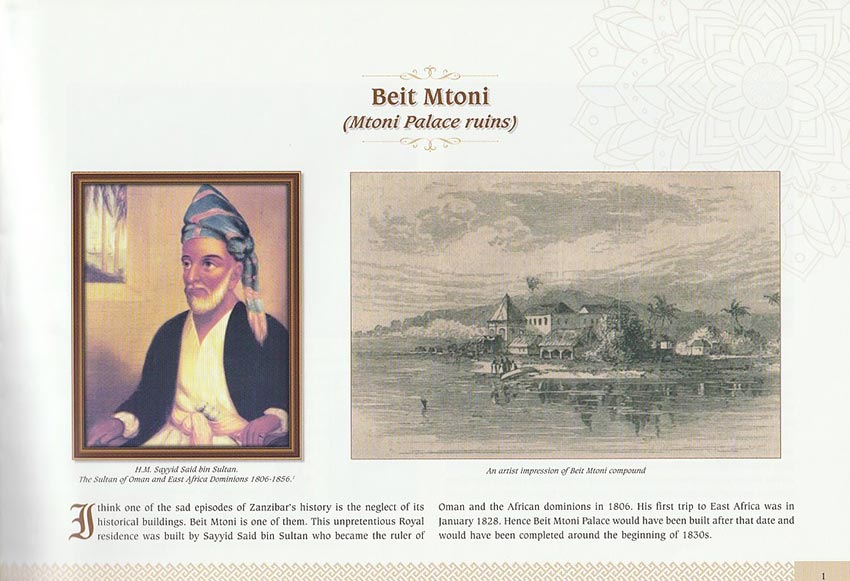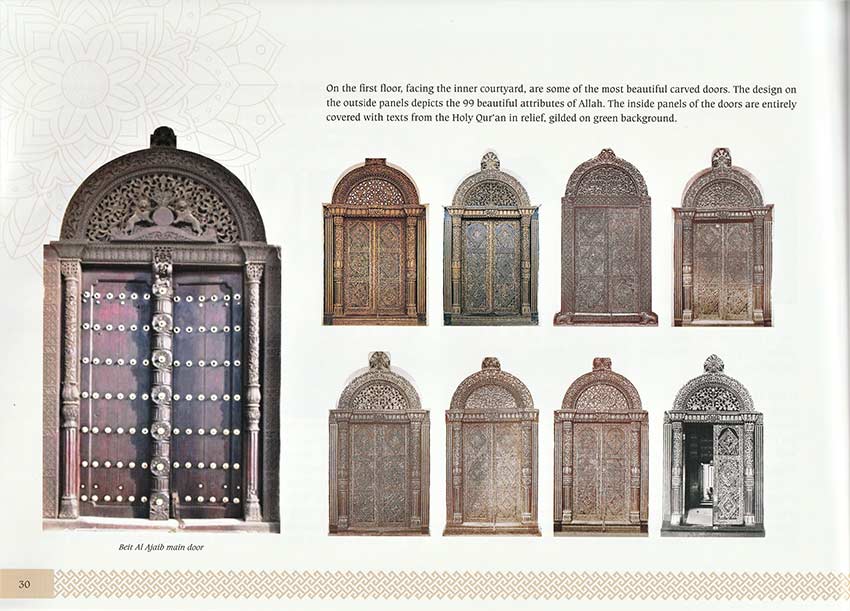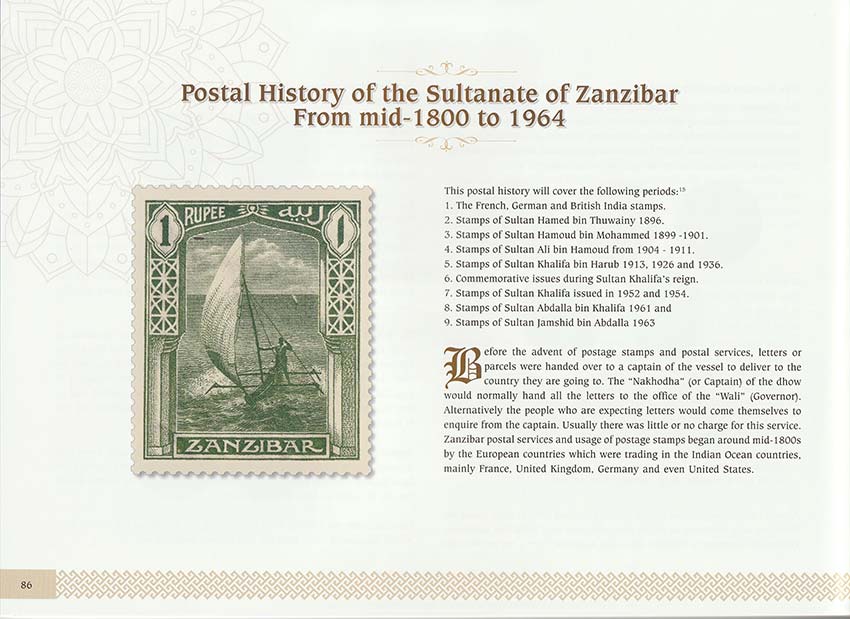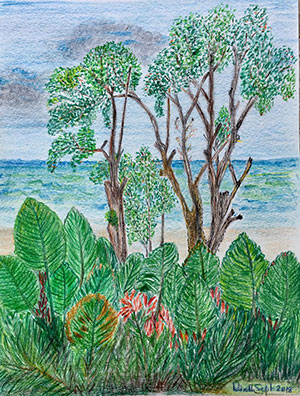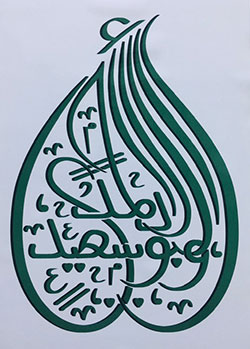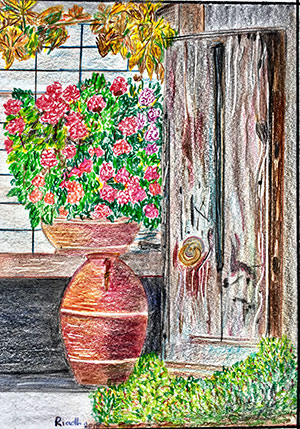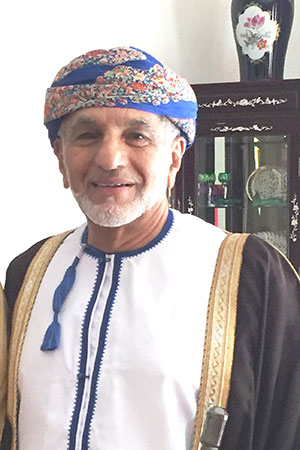At 79, Riadh Abdalla Said Al Busaidi has distinguished himself in multiple roles: by authoring a book, as a calligraphist and an artist. For him, age is just a number. He does not believe in retirement because it gives him more time to challenge himself and fulfil what he always longed for.
As an author of the Pictorial History of Zanzibar 1800-1964, he has effortlessly documented the history of Zanzibar in photographs and supplemented it with a narrative that enabled it to be an easy-to-read book for every history lover. It has even come to be termed as a “reference book” by academicians because of its factual historical contents.
It all began in Zanzibar, where Busaidi was born in 1942. He was brought up at the Palace (Beit Serkal) during the reign of HM Sultan Khalifa Bin Harub who married his aunt Sayyidah Nunuu Bint Ahmed. He grew up there and completed his schooling in Zanzibar and the stories of his ancestors fascinated him.
Growing up with his grandparents piqued his interest in history. He remembers that from a young age he used to listen to the ‘old day’ stories of his grandparents. ‘I was also top of my class in history at school,’ he recalls with pride.
At times, he does feel nostalgic for the past, he admits. “There are many good memories. Home and social life were simple and uncomplicated. We grew up with lots of friends. Those friendships survived until now. Unfortunately, many of them have passed away,” he says.
Many of the essays in this book are narrations passed on to him from his grandparents and from HM Sultan Khalifa and his consort. Like many colonised countries, the history of Zanzibar was written and taught in schools by the colonial rulers. It was written to suit their colonial agenda.
“Many of the historical narrations in the book were provided by my grandparents. I researched some of the stories from the British archives. These stories were not readily available in their history books because they showed the ugly side of their colonial rule,” he smiles.
Zanzibar has changed politically, spiritually, and demographically after the 1964 revolution in Zanzibar. The idea for the book originated from his friends’ random Facebook postings. For several years, he saw them posting pictures of ‘old Zanzibar’, but they often had no narrative. “So, I started writing descriptions to go with those pictures. My postings became popular and many asked me to write a book about the history of Zanzibar,” Busaidi says.
But Riadh felt he could not write it as there were two challenging issues. One was the doubt over which language to use while chronicling the history of Zanzibar. And the other was that many of his target audience either do not have the time to indulge in ‘academic’ books or are not interested in reading books.
“I, therefore, decided to publish a Pictorial History of Zanzibar 1800-1964. I felt that the book will attract many people because of the pictures. The stories that accompany the pictures are written in simple English and are not lengthy,” he says.
He wrote them in a way that even an ordinary person will be able to leaf through them and learn their roots. All the photographs in the book covered the old Zanzibar in the era from 1800 to 1964. Riadh started collecting the pictures most of which were in the public domain and in several instances were on Facebook itself. Busaidi, however, added few old pictures which were in his possession. The most precious ones for him are the stamps, which came entirely from his personal collection as he was an avid collector from his youth.
The book received a great response both from Oman and abroad. He acknowledges that the positive response from all the readers was indeed a gratifying recognition.
“I am grateful to the Ministry of Heritage and Tourism for their support and encouragement to publish this book,” he added.
Riadh is also a good artist as well as a calligraphist. It was the age of 75, Riadh found his passion for drawing, which turned to be a new stress buster for him. He excels in drawing flowers and natural scenery.
“I initially bought colour pencils for my grandchildren. When I started to show them how to draw, I realised that I can learn how to draw as well. I started with flowers and then I tried my hand on calligraphy. I use my drawings in the messages I send to my friends instead of using pictures,” he says.
He feels art strengthens memory and thought processes and helps to rediscover your hidden talents and creativity.
“I believe we are all artists. It is a question of finding oneself what one is good at or what one wants to achieve. Being an artist does not mean drawing or painting. Living is an art!
Busaidi has four children and three grandchildren. “I refer to my children as my ‘four seasons’,” he says.
Beginning his career at Bank of Credit and Commerce International, London, Riadh Al Busaidi was offered a position in Gulf Air in Bahrain. The Bank encouraged him to accept the offer and he moved to Bahrain in 1977.
“I started as Funds Management Controller. After three years, I became Head of Corporate Planning reporting directly to The Chairman of the Board of Directors. In 1986, I was offered the position of General Manager of Oman Aviation in Oman. My career in aviation was my favourite.
Later he served as the CEO of Sabco Group and as Managing Director of Modern Centre for Business Services. Busaidi still has new plans up his sleeve. “People ask me if I am retired. My reply has always been: I am not tired or re-tired or retarded. I have been keeping myself busy with different things. One of them is series of audio recordings with Muhammed Ghassani, who is in Bonn, Germany, the history of East Africa. Starting from 30,000 years ago to the 1900s. These talks are in Kiswahili and are on YouTube.
Riadh tells the new generation, “Aspire to learn about your history. People without the knowledge of their past history are like a tree without roots.”

